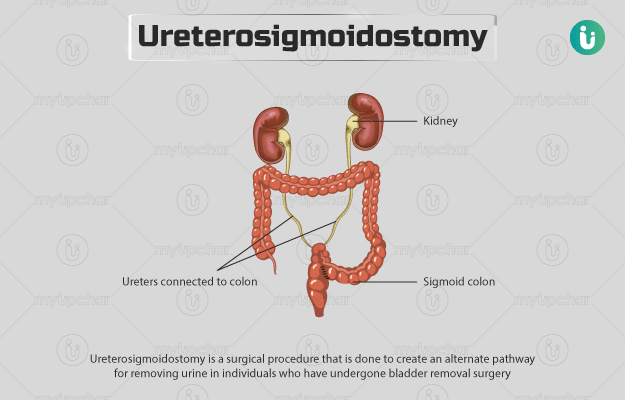Summary
Ureterosigmoidostomy is a surgical procedure that involves the creation of a urinary diversion in individuals with damaged bladder or those who have undergone bladder removal surgery. The urinary tract consists of kidneys, urinary bladder, ureters, and urethra. Kidneys filter blood and produce urine that passes through tubes called ureters into the urinary bladder. The latter then excretes out the urine through the urethra. Individuals with bladder cancer will sometimes need to get their entire bladder removed. In such cases, ureterosigmoidostomy may be done to divert the passage of urine from their ureters into the last part of their large intestine - the sigmoid colon.
The surgery lasts for about one to three hours. It is associated with an increased risk of colon cancer or stones in the kidney or ureters. Due to these risks, the surgery is not usually performed these days. However, unlike other urinary diversion surgeries, this procedure does not require external openings or pouch to collect urine. The surgery helps to improve the quality of life and is also well-accepted.






































